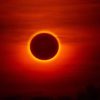The Perseid meteor shower, renowned for its spectacular display of bright shooting stars, has begun its annual appearance and is expected to reach its peak soon. This meteor shower is celebrated for the numerous meteors it produces, making it one of the best opportunities for stargazing each year. The 2024 Perseid shower is anticipated to be particularly impressive, with peak activity expected on August 12.
According to astronomy experts from EarthSky.org and Sky & Telescope, the optimal viewing time for the Perseid meteor shower will be after midnight, when the moon is setting and its light is less intrusive. The moon will be in its first-quarter phase, illuminating about 50% of its surface, which should enhance the visibility of the meteors. The Perseids typically intensify as the night progresses and are often most visible just before dawn.

To maximize your chances of witnessing the meteor shower, it is advised to find a dark location away from city lights. Ideal viewing dates are the nights of August 11, 12, and 13. The Perseid meteor shower, which can produce up to 50 to 100 meteors per hour in optimal conditions, has been active since mid-July and will continue until September 1.
The peak of the shower occurs when Earth passes through the densest part of debris from Comet Swift-Tuttle. This comet, which orbits the sun, leaves behind a trail of tiny ice and rock particles that create the meteors we see. The largest number of meteors will appear around August 12, when Earth is moving through the most substantial portion of this debris field.
The Perseids are named after the constellation Perseus, from which the meteors seem to radiate. While the shower can be observed from nearly any location, dark, rural areas are preferable for the best experience. No special equipment is needed; simply allow your eyes to adjust to the darkness and be prepared to spend at least an hour observing to catch the best moments of the meteor shower.

